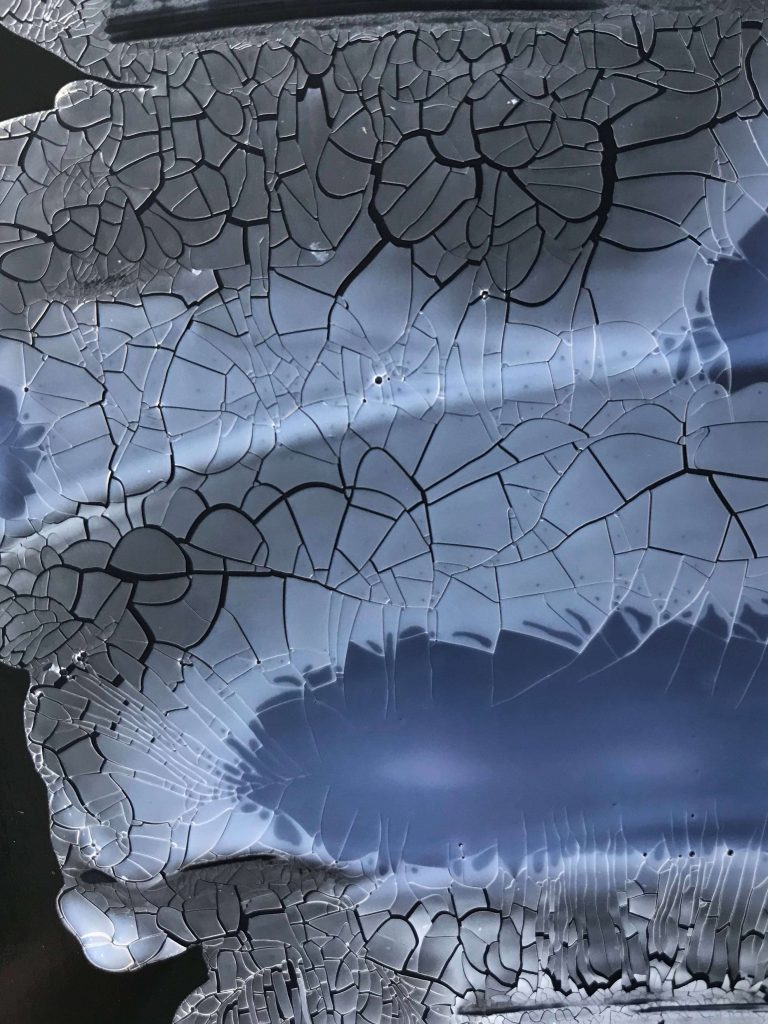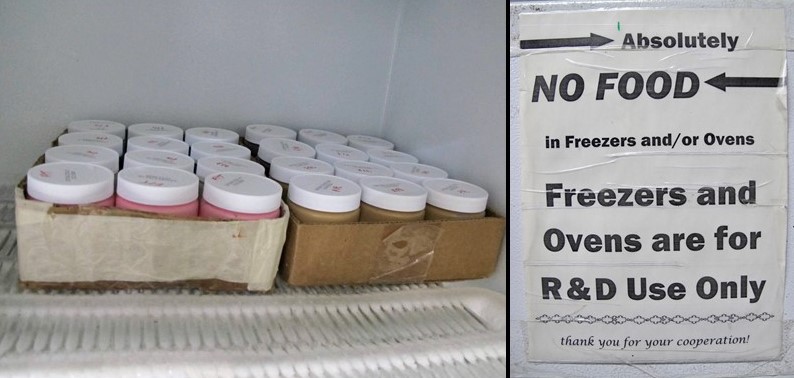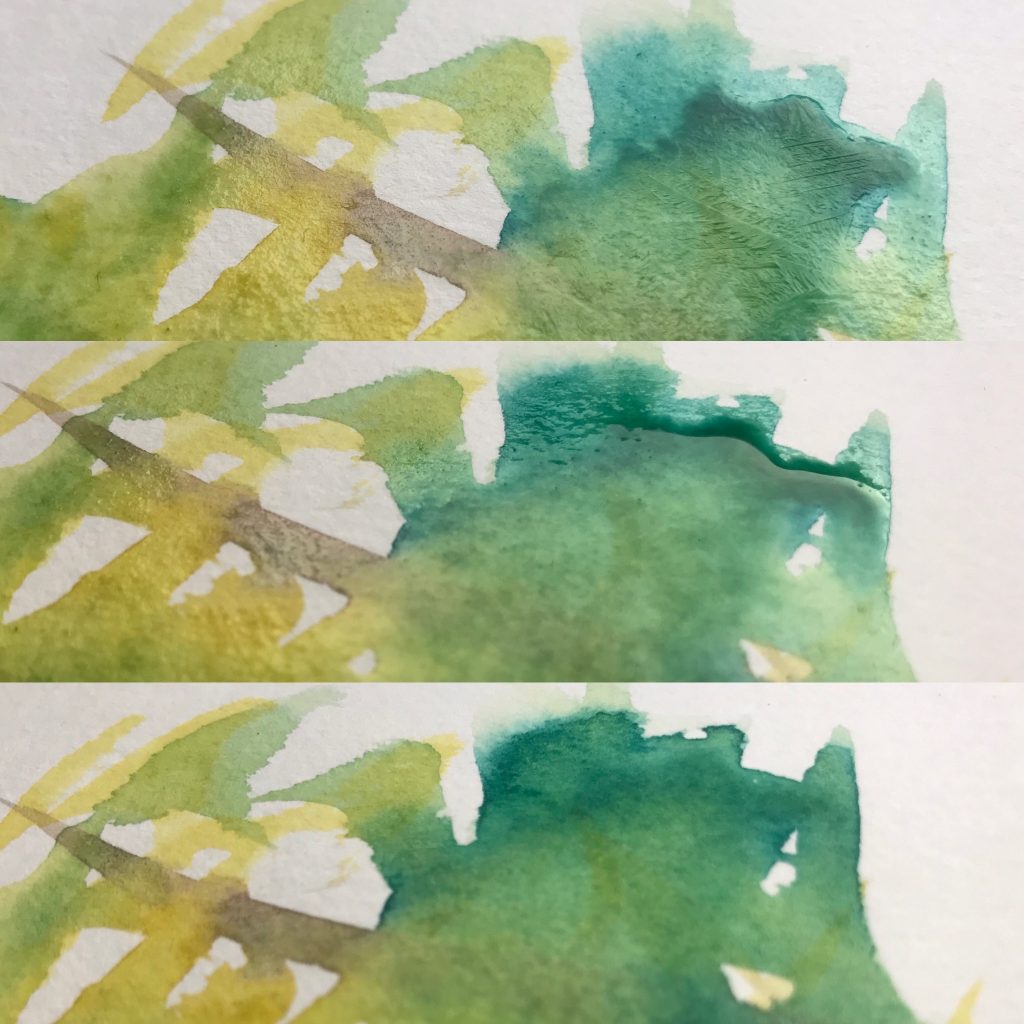Im Winter können wir in Situationen geraten, in denen unsere Ateliers nicht beheizt sind, wir eine Wandmalerei fertigstellen, Firnisse im Freien aufsprühen oder sogar Plein Air malen wollen. Aber wann ist es zu kalt zum Malen?
Die kurze Antwort zuerst…
Die Antwort hängt weitgehend vom Malmedium ab. Für Acrylfarben auf Wasserbasis empfehlen wir eine Mindesttemperatur von 9° C. Aquarellfarben können grundsätzlich bis zum Gefrierpunkt verwendet werden, während Ölfarben weit darunter gehen können und sich am besten für das Malen in der Kälte eignen. Aber auch wenn Sie bei kalten Temperaturen malen können, verändert sich das Verhalten der Farben und die Trocknungs- und Überstreichungszeit von Wasser- und Ölfarben wird verlängert.
Acrylfarben
Acrylfarben werden idealerweise bei Raumtemperatur, d. h. über 16° C, verwendet, wobei Anwendungen unter 9° C, der so genannten “Mindestfilmbildungstemperatur” (MFFT), vermieden werden sollten. Unterhalb dieser Temperatur kann Acrylfarbe keinen starken, zusammenhängenden Film bilden und neigt zu Fehlern und verschiedenen Trocknungsfehlern, wie Rissen, schlechter Haftung und Trübung. Verschiedene Acrylbindemittel oder Polymere können unterschiedliche MFFTs haben, aber 49° F / 9° C ist ein guter Referenzwert. Die MFFT ist also die niedrigste Temperatur, bei der eine Dispersionsfarbe auf Wasserbasis, wie unsere Acrylfarben, gleichmäßig “koalesziert” und aushärtet. Während der Koaleszenzphase fließen die einzelnen Acrylbindemittelteilchen, die im Wasser der nassen Farbe oder des Mediums suspendiert sind, zusammen und legen sich gleichmäßig nieder. Dies geschieht jedoch nur, wenn die Temperatur warm genug ist, damit die Bindemittelteilchen zusammenfließen können.

Einige Acrylprodukte sind heikler als andere, wenn es um die Verarbeitungstemperatur geht. Eines davon ist Crackle Paste, das bei 18-24 °C (65-75 °F) und einer relativen Luftfeuchtigkeit von weniger als 75 % aushärten sollte. Ein weiteres Produkt mit einem Vorbehalt bezüglich der Verarbeitungstemperatur ist GAC 200 (Bild 1), unser härtestes Acrylmedium, das eine MFFT von 21°C / 70°F erfordert.
Wenn Sie bei Temperaturen unter 9° C / 49° F malen wollen, sind gewisse Kompromisse möglich. Von allen vier GOLDEN-Farbserien vertragen die OPEN-Acrylfarben niedrige Temperaturen am besten und sind daher die beste Wahl für das Malen im Freien, z.B. im Winter. Das Gemälde sollte dann in Innenräumen bei Raumtemperatur aushärten. Für das Firnissen mit MSA Varnish oder Archival Varnish haben wir ähnliche Vorschläge. Es ist möglich, diese Firnisse im Freien bei niedrigeren Temperaturen aufzutragen, um sich z. B. weniger Lösungsmittel aus zu setzen, aber die firnissten Stücke sollten sofort nach dem Auftragen in ein Zimmer gebracht werden.
Die Farbstabilität ist ein weiteres Problem bei der Arbeit bei niedrigen Temperaturen und insbesondere bei der Lagerung von Farben. Im besten Fall werden Acrylprodukte bei Raumtemperatur gelagert. Auf diese Weise können Sie die Produkte am längsten verwenden und sicherstellen, dass sie in gutem Zustand bleiben. Mit einer Fabrik im ländlichen Upstate New York, wo die Temperaturen im Winter oft unter dem Gefrierpunkt liegen, wissen wir, wie wichtig es ist, dass unsere Produkte nicht beschädigt werden, wenn sie auf ihren Transportwegen im Winter nicht einfrieren. Alle unsere Acrylprodukte sind so formuliert, dass sie mindestens fünf Gefrier-/Tauzyklen überstehen, ohne dass die Stabilität des Produkts beeinträchtigt wird (Bild 2). Das bedeutet, dass unsere Acrylfarben auch im Winter versandt werden können. Selbst wenn Ihre Farbbestellungen bei der Lieferung vor der Tür abgestellt werden und über Nacht bei eisigen Temperaturen draußen stehen, sollten sie noch einwandfrei zu verwenden sein. Wir testen jedoch nichts über diese ersten fünf Frost-Tau-Zyklen hinaus, so dass es am sichersten ist, sie in einer Umgebung zwischen 16-21°C und 60-70°F aufzubewahren. Da unsere Produkte kein Haltbarkeitsdatum haben, sollten sie, solange sie unter diesen Bedingungen luftdicht gelagert werden, nicht verfallen.

Aquarellfarben
Da Wasserfarben zum Malen Wasser benötigen, liegt es auf der Hand, dass Temperaturen unter dem Gefrierpunkt das Aquarellieren schwierig machen. Ein Zusatz, der das Wasser vor dem Gefrieren schützt, wäre notwendig. Es gibt Geschichten über englische Maler aus dem neunzehnten Jahrhundert, die Aquarellfarben mit Gin statt mit Wasser ansetzten, damit sie auch bei Temperaturen unter dem Gefrierpunkt im Freien arbeiten konnten. Das haben wir bei GOLDEN nicht getestet, aber es könnte einen Versuch wert sein. Je höher die Konzentration des Alkohols, desto niedriger der Gefrierpunkt. Beim Aquarellieren in der Kälte trocknen Farbe und Papier viel langsamer und es besteht ein hohes Risiko, dass die Farben matschig werden, wenn man nicht lange genug wartet. Gefrorene Lavierungen können in der Kälte schöne Kristallisationen erzeugen, aber sobald die Farbe schmilzt, schmelzen die Farben ineinander (Bild 3). Daher kann eine schnellere und trockenere Malweise erforderlich sein.
Wie unsere Acrylfarben werden auch unsere Aquarellfarben strengen Gefrier- und Tautests unterzogen, und QoR-Aquarelle sollten sich nach einem Frost perfekt erholen. Wir gehen auch davon aus, dass QoR-Farben, die auf der Palette getrocknet und dann eingefroren wurden, nach dem Auftauen wieder in Ordnung sind. Gefrorene Farbe ist brüchiger, so dass es zu Abplatzungen oder Rissen kommen kann, wenn die Palette mit der gefrorenen Farbe bewegt wird.

Ölfarben
Von den drei Medien Acryl, Aquarell und Öl ist letzteres am besten geeignet, um bei kalten Temperaturen zu malen. Der Gefrierpunkt von Ölen ist viel niedriger als der von Wasser. Leinöl zum Beispiel gefriert bei -20°C. Öle und Wachse werden bei Kälte steifer, und das gilt auch für Ölfarben, was viele Künstler als positive Eigenschaft ansehen. Auch wenn Ölfarben bei kalten Temperaturen eine brauchbare Konsistenz behalten, ist es besser, Ölgemälde bei Zimmertemperatur aushärten zu lassen, sobald die Malsitzung beendet ist. Kalte Temperaturen verlangsamen die Oxidation und Vernetzung des Öls, wodurch die Farbe erhalten bleibt. Studien zur Konservierung haben jedoch gezeigt, dass es bei ausgehärteten Ölfarben erhebliche chemische Unterschiede gibt, die vom Klima abhängen, in dem die Gemälde entstanden sind, weshalb wir empfehlen, extreme Temperaturen nach Möglichkeit zu vermeiden.
Fazit
Zusammenfassend lässt sich sagen, dass Ölfarben und OPEN Acrylics am besten geeignet sind, um bei kalten oder sogar unter dem Gefrierpunkt liegenden Temperaturen zu malen. In diesem Fall, z. B. bei Plein Air Malerei im Winter, ist es am besten, die Bilder bei Raumtemperatur aushärten zu lassen, sobald sie fertig sind. Es empfiehlt sich, keine mit Gesso bespannten Leinwände zu verwenden, da Acrylgesso bei kalten Temperaturen Risse bekommen kann. Starre Untergründe wären eine bessere Option als Leinwand. Andere Medien, die in Betracht gezogen werden können, sind Ölpastellkreide oder Buntstifte, um kleinere Studien zu erstellen, die für größere Arbeiten in Innenräumen verwendet werden können.
Weitere Informationen über die Haltbarkeit von Acrylprodukten finden Sie in unserem Artikel Haltbarkeit von GOLDEN Acrylics.
About Mirjam Auf der Mauer
View all posts by Mirjam Auf der Mauer -->Subscribe
Subscribe to the newsletter today!
No related Post

